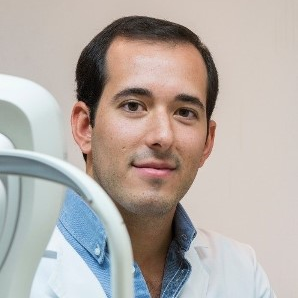New Horizons in Vision Science, Optometry and Ocular Surface—2nd Edition
A special issue of Life (ISSN 2075-1729). This special issue belongs to the section "Physiology and Pathology".
Deadline for manuscript submissions: 31 July 2024 | Viewed by 2712
Special Issue Editors
Interests: optometry; vision science; contact lens; binocular vision
Special Issues, Collections and Topics in MDPI journals
2. Ophthalmology Department, VITHAS Málaga, 29016 Málaga, Spain
3. Hospital Regional, Universitario de Málaga, Plaza del Hospital Civil, S/N. 29009 Malaga, Spain
4. Departamento de Cirugía, Universidad de Sevilla, Área de Oftalmología, Doctor Fedriani, S/N, 41009 Seville, Spain
Interests: anterior segment surgery; refractive surgery; presbyopia and cataracts
Special Issues, Collections and Topics in MDPI journals
Interests: physiological optics; ocular accommodation; ocular autofluorescence; ocular surface; refractive correction
Special Issues, Collections and Topics in MDPI journals
Special Issue Information
Dear Colleagues,
The second volume of this Special Issue follows on from the success of the first and we invite you to publish your research in this edition of “New Horizons in Vision Science, Optometry and Ocular Surface” (https://0-www-mdpi-com.brum.beds.ac.uk/journal/life/special_issues/89ZL3SBLQF)
Currently, research on optometry and ocular surface covers fields ranging from binocular vision, accommodation, and ocular surface to contactology or refractive surgery. Ophthalmologists and optometrists need the latest and most up-to-date information available to improve their processes in daily clinical practice. However, on some occasions, daily care work does not allow time to review the latest developments in clinical optometry and ocular surface. Therefore, this Special Issue aims to share with professionals the latest news and new horizons in this discipline.
Research is the present of our profession, and it must also be the future. This will enable us to achieve more optimized clinical practice, as research is the result of our knowledge power and a source of new inspiration and progress.
This Special Issue invites original research and review articles on recent achievements in advanced and clinical optometry and ocular innovative studies.
Dr. José-María Sánchez-González
Dr. Carlos Rocha-de-Lossada
Dr. Alejandro Cerviño
Guest Editors
Manuscript Submission Information
Manuscripts should be submitted online at www.mdpi.com by registering and logging in to this website. Once you are registered, click here to go to the submission form. Manuscripts can be submitted until the deadline. All submissions that pass pre-check are peer-reviewed. Accepted papers will be published continuously in the journal (as soon as accepted) and will be listed together on the special issue website. Research articles, review articles as well as short communications are invited. For planned papers, a title and short abstract (about 100 words) can be sent to the Editorial Office for announcement on this website.
Submitted manuscripts should not have been published previously, nor be under consideration for publication elsewhere (except conference proceedings papers). All manuscripts are thoroughly refereed through a single-blind peer-review process. A guide for authors and other relevant information for submission of manuscripts is available on the Instructions for Authors page. Life is an international peer-reviewed open access monthly journal published by MDPI.
Please visit the Instructions for Authors page before submitting a manuscript. The Article Processing Charge (APC) for publication in this open access journal is 2600 CHF (Swiss Francs). Submitted papers should be well formatted and use good English. Authors may use MDPI's English editing service prior to publication or during author revisions.
Keywords
- clinical optometry
- binocular vision
- ocular surface
- refractive surgery
- contactology and dry eye disease
Related Special Issue
- New Horizons in Vision Science, Optometry and Ocular Surface in Life (13 articles)








